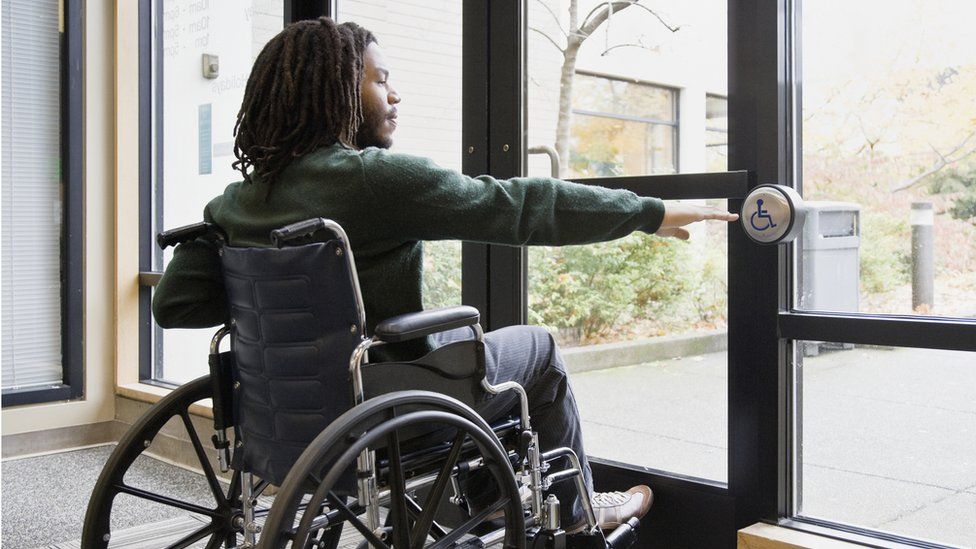Understanding SSDI: Who Qualifies, How to Apply, and More
Claiming Social Security Disability Insurance won't be a huge hassle if you have the right information.
In 2016, around 10.2 million Americans received disability benefits with an average monthly payment of $1,172.
That's a huge help! But, what's also important to note is that, historically, only 48% of first-time claimants are granted Social Security Disability Insurance (SSDI).
In most cases, this is due to a lack of acceptable proof of impairment or erroneous information provided on the required paperwork.
As a result, plenty of SSDI claimants hire a consultant or an attorney to assist them with their application.
It's also recommended that people who think they could be eligible for SSDI talk to an experienced consultant before filling out the application.
In the meantime, you can check out this article to start gathering the right information for your SSDI application.
What is SSDI?
Social Security Disability Insurance (SSDI) is a social safety program that covers workers if they get sick or injured and are unable to work.
SSDI doesn’t require a person to pay any premiums to an insurance provider. Instead, workers pay Social Security taxes with each paycheck, with a percentage going to the SSDI program.
Workers can apply for SSDI compensation if they have a qualifying disability.
These payments can be provided to them for the duration of their disability, up until they reach retirement age and begin receiving pensions.
How Does SSDI Differ From SSI?
The difference between SSI and SSDI is their basis. SSI is based on a person’s income limits, whereas SSDI is based on job credits.
To be eligible for SSI, a person must be of retirement age and their income must fall under the SSA’s income guidelines.
Individuals on SSI immediately qualify for Medicaid throughout most states, but those on SSDI only become eligible for Medicare after two years of SSDI benefits.
Depending on age, a person must also accumulate a certain amount of work credits first to be eligible for SSDI.
Who Qualifies for the SSDI Program?
The following persons are eligible for SSDI:
Individuals who have Obtained a Sufficient Amount of Work Credits
Work credits are points earned by receiving a particular amount of income and paying Social Security taxes. An individual will get one credit for every $1,510 in income, limited to four credits every year.
As average income levels rise, the amount of earnings required for credits also increases each year. Even if you change employment or have no income for a period of time, the credits earned stay on your individual Social Security profile.
The number of work credits required to be eligible for SSDI varies based on the age when a person has become incapacitated.
As a rule of thumb, persons may be eligible for SSDI if they acquired at least 20 credits in the ten years before being incapacitated.
The work credit threshold decreases for people who got incapacitated when they were young.
If they are between 24 and 31 years of age, they may be eligible if they have worked for at least half of the time between when they first turned 21 years old and the onset of their handicap.
There’s a chart that shows how many credits they will need if they are between 31 and 62 years of age.
Persons Unable to Participate in Substantial Gainful Activities
“Substantial Gainful Activity” (SGA) is defined as making at least a particular amount of money through employment (other income sources are not taken into account). The SGA level fluctuates regularly.
The SGA amount for lawfully blind and non-blind incapacitated people in 2022 is $2260 and $1350 per month, respectively.
SGA doesn’t apply to SSI payments for the blind, but it applies to Social Security and SSI payments for incapacitated non-blind people. Persons earning monthly wages exceeding $970 will not be eligible for SSDI.
The SSA imposes this restriction to ensure that their impairment keeps them from working. If they get a regular income, they are not considered too handicapped to work.
Persons Who Fulfill the Criteria for Being Incapacitated
Applicants must have a significant long-term health condition that prohibits them from working to qualify for SSDI.
It doesn’t matter what caused their handicap; an accident, disease, or anything else might have caused it.
The most crucial factor is that they fulfill the SSA’s very stringent and narrow definition of disability.
They must be unable to perform any work for which they are competent.
This includes the job they were performing before becoming incapacitated and any other employment for which they are qualified.
How to Apply for SSDI
Qualified persons can apply for SSDI online or by contacting SSA’s toll-free number, 1-800-772-1213, during official business hours.
If they cannot apply for the SSDI online, they can schedule an appointment with one of SSA’s agents to apply.
Deaf or hard of hearing people can phone SSA’s toll-free “TTY” line, 1-800-325-0778, during official business hours.
Some factors people who qualify for SSDI need to know before applying include:
How Long Does it Take for SSA to Make a Decision on an Application?
It takes 3 to 5 months to receive a judgment in most cases.
However, how long it will take for individuals to collect their medical records and any other proof needed to decide will determine the precise timing.
How Does the SSA Make a Decision on an Application?
The Social Security Administration will forward applications to a state entity that conducts disability determinations. The state employs healthcare and vocational specialists who call doctors and other treatment facilities to get health records.
Individuals applying for SSDI may be sent documents to complete or asked to undergo a physical examination or medical test by the state agency.
People who apply for SSDI will not be charged for examinations or tests that the state agency requests from them.
What to do if an SSDI Application is rejected?
If a person is legitimately handicapped, they can take steps to dispute the denial of their benefits application. Here are the steps they should take to preserve their rights:
-
Reconsideration: If the Social Security Administration rejects a person’s application, they will give them a letter explaining why. They have the right to ask for reconsideration and have their entire file reviewed.
-
Appeal: If their application is still rejected after requesting reconsideration, the person can appeal the decision and ask for a hearing. After a hearing, an administrative law judge will decide the matter.
Conclusion
If you think your medical or mental health will keep you from working full-time for at least a year, you should consult a doctor about what they believe your mental or physical capabilities are.
If your doctor believes you have a serious disability that may keep you from working, you can make a claim with the Social Security Administration at your local office or online.
Do not delay since the duration it takes to get a determination on an SSID claim can be considerable, and your health condition may deteriorate by that time.
Don't Miss: How To Leverage Social Security, Disability And Other Benefits For Financial Security













